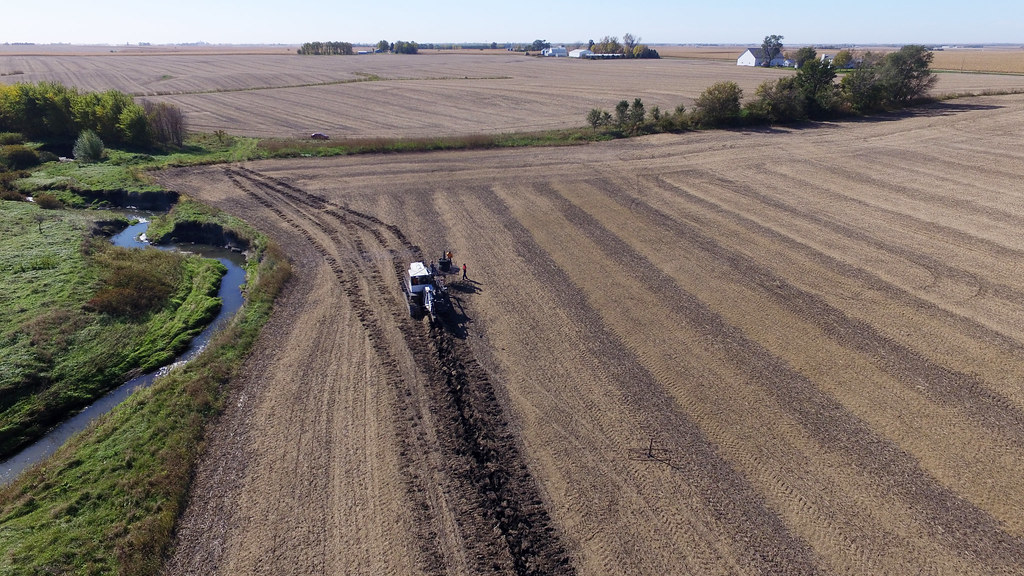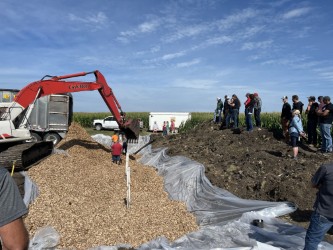Product
December 10, 2024 / 3 minute read
Fit for Drainage: Bioreactors Boost Water Quality

A simple tool with a complex-sounding name is making a big difference to enhance water quality — with no downside for the farmer, landowner or anyone downstream.
A bioreactor is an edge-of-field practice that works with subsurface agricultural field tile to remove 35% to 50% of the nitrates water may pick up from farmland. It does not affect the adjoining field’s production and requires almost no maintenance. Importantly, it can often be installed with little or no direct cost to the landowner.
This practice started in Iowa in 2009 and expanded by the hundreds since demonstrating its benefit to water quality. New conservation programs and cost-share options make the water quality effort more accessible than ever.
How Does it Work?
A bioreactor is a buried trench installed at the edge of a field. A water control structure links the field’s tile main to the trench, which is filled with wood chips and then enclosed. The wood chips provide the carbon source to treat the nitrates in the water and release them as nitrogen gas.
 “The name might sound tricky, but it’s really about getting water to flow through a carbon-rich source and having enough retention time to let the microbes do their work and turn the nitrates into a gas,” said Keegan Kult, executive director of the Agricultural Drainage Management Coalition. “It’s really not a complicated process. It’s science.”
“The name might sound tricky, but it’s really about getting water to flow through a carbon-rich source and having enough retention time to let the microbes do their work and turn the nitrates into a gas,” said Keegan Kult, executive director of the Agricultural Drainage Management Coalition. “It’s really not a complicated process. It’s science.”
Bioreactors are generally about 100 feet long and 20 feet wide. That size treats 40 to 80 acres of the tiled field. Most installations take a couple of days and can connect with existing and new agricultural tile alike.
The Price is Right
A bioreactor costs around $12,000 to install but coordinated water quality incentives are available to aide in cost-sharing. State and county programs, such as Iowa’s Batch and Build, are designed to remove barriers to installation and maximize the number of bioreactors in a watershed. The program has been key for adoption by taking on the cost and planning for new projects.
“Having state funding really helps expand these practices,” said Kult. “Other states have nice funding available, too, like Ohio’s H2Ohio program.”
Easy Does It
Another beneficial feature of bioreactors is how little maintenance they require. The denitrifying wood chips in the trench are effective for about ten years. After that, the trench is cleared and refilled with new wood chips. The entire experience is largely hands-off for the landowner.
“Water quality is obviously something that impacts everyone, and bioreactors are specifically designed for subsurface agricultural drainage to be a leader in that effort,” said Kevin Kingery, an ADS territory manager. “We know bioreactors work. The next step is to ramp up installation.”
Our Reason is Water
ADS is committed to water quality. Bioreactors are an emerging tool to support that effort and enable water management systems to have a greater impact.
Interested landowners can reach out to their local NRCS office to find out about bioreactor opportunities in their area. Contact your ADS rep for your water management system needs.
